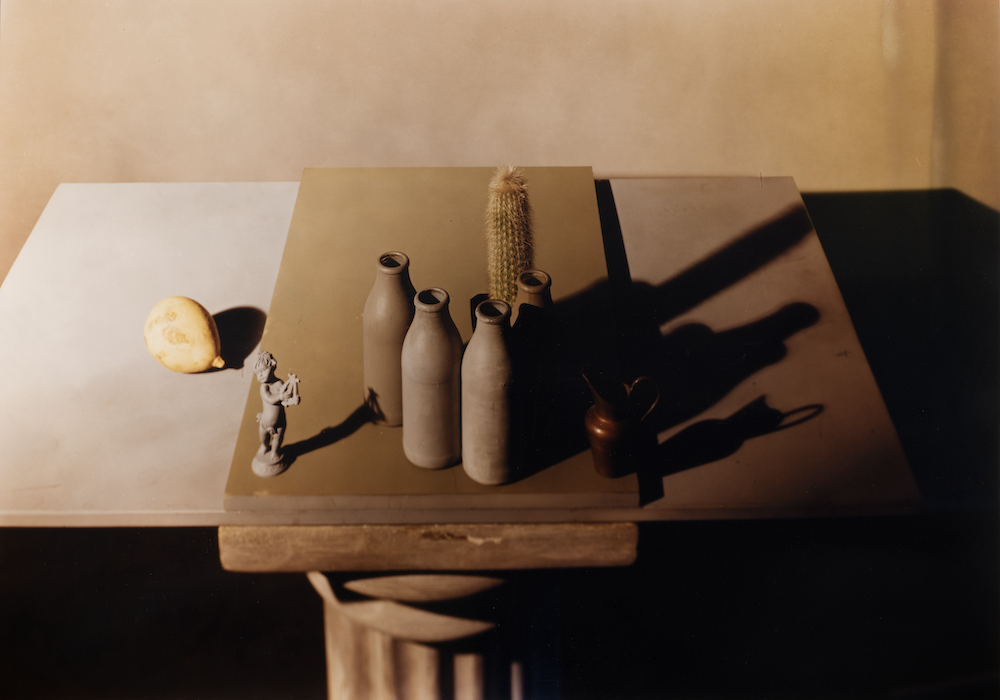Jan Groover (1943–2012)
American postmodernist photographer
Originally a painter, studying at the Pratt Institute in Brooklyn, Jan Groover worked from the late 1970s into the 2000s in postmodernist colour photography. She bought her first camera in 1967 and chose photography over painting in 1971, because “with photography I didn’t have to make things up. Everything was already there.”
Jan also experimented with the platinum palladium process, using a large format view camera and making her own prints of still lives and architectural photography. An example of this work is her 1980s series of Brooklyn buildings, ‘Industrials’.
Her early work explored the urban environment and was displayed in diptych and triptych formats, lending them a cinematic, minimalist quality. In works such as Untitled, 1977, movie-like stills of houses are linked by colour and shape. However, Jan chose tabletop still life as her preferred medium, exploring the relationship between objects in space. Even in her rare portraits of children, such as Untitled (1980), she interestingly crops them into a still life of body parts.
Jan’s early studio compositions have a 1930s aesthetic which was unusual at the time. The shadows, reflections and sumptuous colours of the staged domestic objects are a modernist take on the Bauhaus photographers, such as Elsa Thiemann’s compositions with cutlery and kitchen utensils.
I like her sensuous Edward Weston-like green peppers of Untitled , 1979, the painterly Morandi-like still life Untitled, 1987, and the lush Untitled, 1978.
Jan’s groundbreaking colour work was featured on the January 1979 cover of Artforum magazine and was exhibited for the first time at MoMA in 1987, when she was called ‘one of the most exciting and intelligent photographers of her generation.’ This exposure contributed to legitimising colour photography in the art world.
She taught for more than a decade at the State University of New York, following her credo ‘Formalism is everything.’In 1991, she moved to France and shifted her focus to chromogenic printing and photographing still lives outdoors.
MoMA holds 40 of her photographs in its permanent collection, dating from 1975 to 2006, and the Photo Elysée Lausanne acquired her archive of 20,000 negatives in 2017. Her estate is represented by the Janet Borden Gallery.
By Paula Vellet












